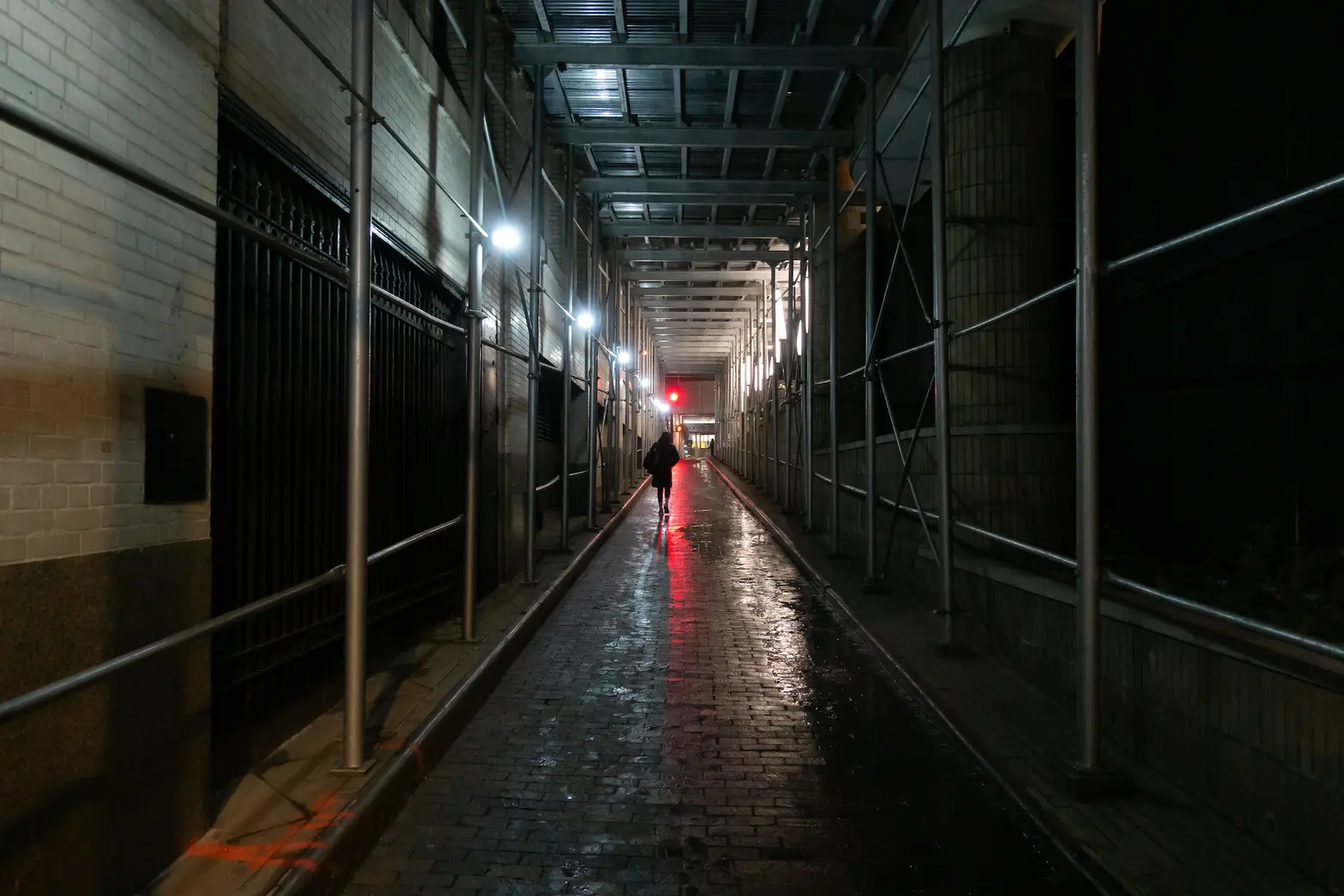New plan aims to crack down on NYC’s unsightly scaffolding

Photo courtesy of Billie Grace Ward on Flickr
A new plan aims to cut down the amount of time scaffolding spends hovering over New York City sidewalks. Released this week by Manhattan Borough President Mark Levine and City Council Member Keith Powers, the “Shed the Shed” report recommends several strategies aimed at taking down sidewalk sheds quickly, including accelerating construction on buildings, reducing permitting delays, reforming design standards, and holding buildings more accountable by increasing penalties.
Recognize scenes like these? If you live in NYC you do.
Scaffolding in NYC is a good idea run amok. In Manhattan alone there are 4k+ of these sidewalk sheds. Some have been up for years, creating a blight in many neighborhoods.
Today we’re releasing a plan to rein this in.? pic.twitter.com/LFHN4lxFej
— Mark D. Levine (@MarkLevineNYC) March 6, 2023
Sidewalk sheds, which protect New Yorkers from falling debris but also affect foot traffic and pedestrian safety, remain up for an average of 498 days.
While sidewalk sheds and scaffolding are necessary precautions that keep both pedestrians and construction workers safe, a large portion of current sheds have been left up for years. Across the city, over 230 sidewalk sheds have been up for over five years.
The “Shed the Shed” plan lays out a variety of strategies to tackle the problem, with the first focused on helping property owners finish construction work faster. The report recommends providing developers with low-interest loans and creating an “accelerator program” through the city’s Department of Buildings that would provide owners easy access to experts and guidance on how to most efficiently complete facade work.
A second strategy would streamline the permit process for facade work, especially in historic districts where work on buildings requires approval by the Landmarks Preservation Commission before being brought to the DOB. Because of these delays, sidewalk sheds are often installed months prior to the start of construction.
The City of New York is one of the worst offenders for long-term scaffolding, with sidewalk sheds staying up for more than a year on average for city-owned property. The plan calls for the creation of a task force to determine why city-owned properties remain some of the worst offenders and figure out ways to resolve these issues.
To encourage building owners to prioritize completing facade work, the DOB should issue fines and other penalties to buildings that fail to complete construction in a timely manner, according to the report. The DOB could also use emergency powers to direct the city to perform work on unsafe buildings immediately.
While the plan’s main goal is to reduce the time sidewalk sheds remain up, the safety of pedestrians and workers is still a top priority. In order to expedite the construction process, the plan would reform design standards to allow for different kinds of layouts and materials that would better fit the needs of the community, pedestrians, and construction crews.
The number of sidewalk sheds across the five boroughs has tripled over the last two decades, as 6sqft previously reported. While Manhattan has the highest number of active sheds, the outer boroughs have begun to catch up over recent years.
An interactive map from the DOB tracks the city’s active sidewalk shed permits. Citywide, there are currently 9,057 active sheds which have been up for an average of 498 days.
RELATED:





























